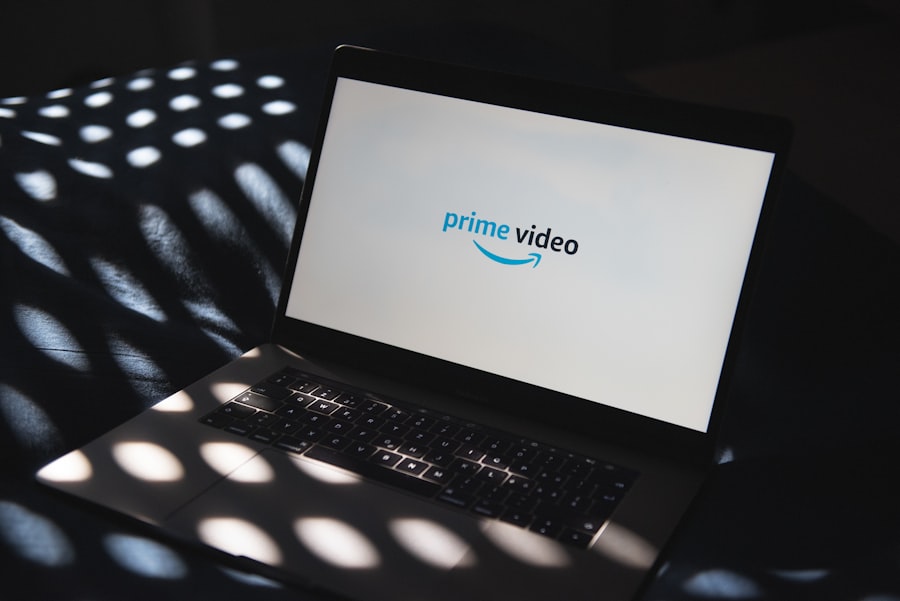In the rapidly evolving landscape of healthcare, video marketing has emerged as a transformative tool that can significantly enhance patient engagement and education. The visual nature of video content allows healthcare providers to convey complex medical information in a more digestible format, making it easier for patients to understand their conditions and treatment options. According to a study by Wyzowl, 86% of businesses use video as a marketing tool, and this trend is increasingly being adopted in the healthcare sector.
The ability to combine visuals, audio, and text creates a multi-sensory experience that can capture attention more effectively than traditional written content. Moreover, video marketing in healthcare is not just about promoting services; it also plays a crucial role in building relationships with patients. By showcasing the human side of healthcare—such as the stories of healthcare professionals, patient testimonials, and behind-the-scenes glimpses of medical facilities—providers can foster a sense of trust and connection.
This emotional engagement is vital in an industry where patients often feel vulnerable and anxious about their health. As a result, video marketing can serve as a bridge between healthcare providers and patients, facilitating better communication and understanding.
Key Takeaways
- Video marketing is a powerful tool to engage and educate healthcare audiences effectively.
- Creating clear, informative, and compelling videos enhances patient understanding and trust.
- Social media platforms amplify the reach and impact of healthcare video content.
- Patient testimonials in videos build credibility and foster stronger patient-provider connections.
- Tracking video performance metrics is essential to optimize and measure marketing success.
Creating Compelling and Informative Healthcare Videos
Creating compelling healthcare videos requires a strategic approach that prioritizes clarity, relevance, and engagement. First and foremost, it is essential to identify the target audience and tailor the content accordingly. For instance, videos aimed at educating patients about a specific condition should use language that is accessible to laypersons, avoiding medical jargon that could confuse viewers.
Incorporating storytelling elements can also enhance engagement; for example, sharing a patient’s journey through diagnosis and treatment can resonate with others facing similar challenges. In addition to storytelling, the production quality of healthcare videos cannot be overlooked. High-quality visuals and clear audio are critical in maintaining viewer interest and conveying professionalism.
Utilizing animations or infographics can help illustrate complex concepts, making them easier to grasp. Furthermore, including calls to action at the end of videos—such as encouraging viewers to schedule an appointment or visit a website for more information—can drive engagement and conversion rates. By focusing on both content and production quality, healthcare providers can create videos that not only inform but also inspire action.
Leveraging Social Media for Video Marketing

Social media platforms have revolutionized the way healthcare organizations can reach and engage with their audiences. With billions of users worldwide, platforms like Facebook, Instagram, Twitter, and TikTok offer unparalleled opportunities for video marketing. By sharing informative and entertaining video content on these platforms, healthcare providers can increase their visibility and connect with potential patients in a more personal manner.
For instance, short clips highlighting health tips or wellness advice can be easily shared and have the potential to go viral, significantly expanding the reach of the message. Moreover, social media allows for real-time interaction with audiences. Healthcare providers can respond to comments, answer questions, and engage in discussions directly with viewers.
This two-way communication fosters a sense of community and trust, as patients feel heard and valued. Additionally, leveraging user-generated content—such as patient testimonials or success stories—can further enhance credibility and authenticity. By actively participating in social media conversations and sharing valuable video content, healthcare organizations can position themselves as thought leaders in their field while simultaneously building a loyal patient base.
Connecting with Patients through Video Content
| Metric | Description | Typical Value | Importance |
|---|---|---|---|
| Video View Count | Number of times the video content is viewed by patients | 1,000 – 50,000 views | High – Indicates reach and interest |
| Average Watch Time | Average duration patients spend watching the video | 2 – 5 minutes | High – Reflects engagement level |
| Patient Engagement Rate | Percentage of viewers who like, comment, or share the video | 5% – 15% | High – Shows active patient interaction |
| Click-Through Rate (CTR) | Percentage of viewers who click on links or calls to action in the video | 2% – 10% | Medium – Measures effectiveness of CTAs |
| Patient Feedback Score | Average rating or sentiment score from patient comments or surveys | 4.0 – 4.8 out of 5 | High – Indicates patient satisfaction |
| Conversion Rate | Percentage of viewers who take a desired action (e.g., appointment booking) | 1% – 5% | High – Measures impact on patient behavior |
| Video Sharing Rate | Percentage of viewers who share the video with others | 3% – 12% | Medium – Helps increase organic reach |
Video content serves as a powerful medium for connecting with patients on a deeper level. In an era where patients seek more personalized experiences in their healthcare journeys, videos can humanize providers and create relatable narratives. For example, introducing healthcare professionals through short video bios can help patients feel more comfortable before their first visit.
These videos can showcase the provider’s expertise while also revealing their personality, interests, and approach to patient care. Furthermore, educational videos that address common patient concerns—such as managing chronic conditions or understanding treatment options—can empower patients with knowledge. When patients feel informed about their health decisions, they are more likely to engage actively in their care process.
This empowerment not only enhances patient satisfaction but also leads to better health outcomes. By utilizing video content to foster connections and provide valuable information, healthcare providers can create a supportive environment that encourages patient participation.
Using Video Testimonials to Build Trust and Credibility
Video testimonials are an invaluable asset in building trust and credibility within the healthcare sector. When potential patients see real individuals sharing their positive experiences with a provider or treatment, it creates an authentic connection that written testimonials often lack. These videos serve as powerful endorsements that can influence decision-making processes for prospective patients who may be hesitant about seeking care.
To maximize the impact of video testimonials, it is essential to focus on storytelling elements that highlight specific aspects of the patient experience. For instance, a testimonial could detail how a particular treatment improved the patient’s quality of life or how compassionate care made a difference during a challenging time. Including diverse patient stories can also resonate with a broader audience, showcasing the provider’s ability to cater to various needs and backgrounds.
By strategically incorporating video testimonials into marketing efforts, healthcare organizations can effectively build trust and encourage new patients to seek care.
Educating Patients with How-To and Explainer Videos

How-to and explainer videos are particularly effective tools for educating patients about various health topics and procedures. These videos can demystify complex medical concepts or provide step-by-step instructions for managing health conditions at home. For example, a how-to video demonstrating proper inhaler techniques for asthma patients can empower individuals to take control of their health management effectively.
In addition to practical guidance, explainer videos can address common misconceptions about medical procedures or treatments. By providing clear explanations of what to expect during a procedure or outlining the benefits and risks associated with certain treatments, healthcare providers can alleviate patient anxiety and foster informed decision-making. This educational approach not only enhances patient understanding but also builds confidence in the provider’s expertise.
By investing in high-quality how-to and explainer videos, healthcare organizations can position themselves as trusted sources of information while improving patient outcomes.
Integrating Video Marketing into Your Healthcare Practice’s Website
Integrating video marketing into a healthcare practice’s website is essential for maximizing its impact on patient engagement and education. A well-structured website that features relevant video content can significantly enhance user experience by providing visitors with valuable information at their fingertips. For instance, embedding educational videos on condition-specific pages allows patients to access information quickly while browsing for services.
Additionally, incorporating video content into landing pages can improve conversion rates by capturing visitors’ attention more effectively than text alone. A compelling introductory video that outlines the practice’s mission, values, and services can create an immediate connection with potential patients. Furthermore, optimizing videos for search engines by using relevant keywords in titles and descriptions can improve visibility in search results, driving more traffic to the website.
By seamlessly integrating video marketing into their online presence, healthcare practices can create a dynamic platform that engages visitors while providing essential information.
Measuring the Success of Your Video Marketing Efforts
To ensure that video marketing efforts yield positive results, it is crucial to implement effective measurement strategies that assess performance across various metrics. Key performance indicators (KPIs) such as view count, engagement rate (likes, shares, comments), click-through rate (CTR), and conversion rate provide valuable insights into how well videos resonate with audiences. For instance, analyzing viewer retention rates can reveal whether audiences are watching videos in their entirety or dropping off at specific points.
Additionally, utilizing tools like Google Analytics or social media insights can help track traffic sources and user behavior on websites or social media platforms after video content is shared. This data allows healthcare organizations to refine their strategies based on what works best for their audience. Regularly reviewing these metrics enables providers to adapt their video marketing efforts over time, ensuring they remain relevant and effective in meeting patient needs.
By prioritizing measurement and analysis, healthcare organizations can continuously improve their video marketing strategies for optimal impact on patient engagement and education.



